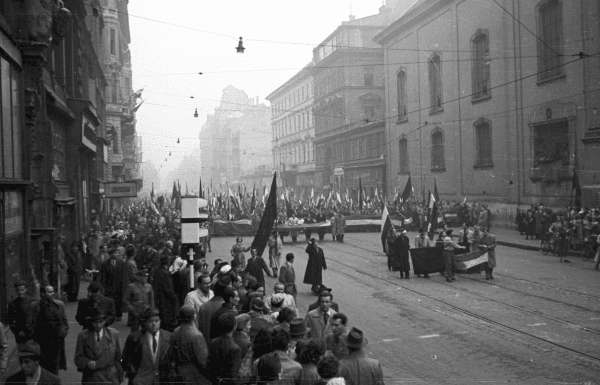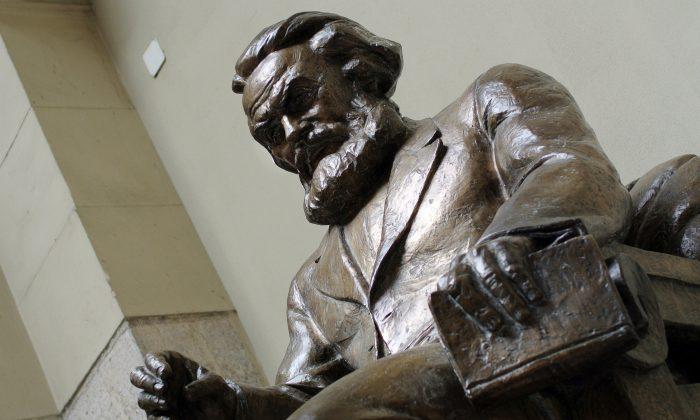While the recent victory of Gov.-elect Glenn Youngkin in Virginia is a significant setback to those who are advocating for the introduction of critical race theory and other leftist curricula in schools, it’s by no means a definitive defeat of these forces. Youngkin only won by 65,000 votes, and the districts that had the most notable cases of radicalized school boards—such as my hometown in Loudoun County—still voted for the candidate who believed that parents shouldn’t have a say in schools.
Millions of children in the United States remain enrolled in politicized education, with no realistic chance of a change in state or local administration. Even if parents choose to homeschool their children, the current career landscape often necessitates sending children to college, an institution that has long been dominated by left-leaning academia.
Parents in solidly conservative states likewise face this quandary, as most governors have yet to go after and dismantle the radical academia present in their own state universities. Thus, raising children in this country often means navigating a myriad of “woke-dominated” educational institutions.
While this might seem like a hopeless predicament for those raising children, parents must realize that despite the extensive levels of political pressure their children may face in school, college, and society, parents are the most powerful force in their children’s rearing.
We know this because just 65 years ago, parents in Hungary fostered a generation that would rise against leftist totalitarianism, an event that shook the Soviet Union.

The Hungarian Revolution, where Hungarians rose en masse against their Soviet-puppet government, began on Oct. 23, 1956, when large crowds, mainly led by college students, began demonstrating throughout Hungary and demanding reform. Although the revolutionaries initially succeeded in achieving concessions from the Soviets, such as the withdrawal of Soviet troops from Budapest, Hungary, and the reinstatement of a reformist prime minister, the Soviets quickly reneged on their initial gestures and returned a few days later to squash the uprising in Budapest and other major Hungarian towns.
A System of Indoctrination
While this tale might seem like a tragic victory of communism over liberty, the revolution revealed a colossal failure of communism: There are obvious limits to the widespread and extensive system of socialist indoctrination of the youth.One can understand older Hungarians revolting against the communists. The regime in 1956 was only around 10 years old, and anyone older than 30 could remember what life with freedom was really like. However, a large percentage of those who revolted and who fought in the streets were young adults, some of them being mere teenagers. Many of them were exclusively educated under the communist regime, so it’s no small feat that these young men and women hadn’t been successfully indoctrinated by the Soviet-installed education system.
One of the first actions the communist regime carried out after seizing power in the late 1940s was to establish an expansive and indoctrinating education system. They first nationalized Hungary’s schools, ending the country’s longstanding system of church-run education, and established a curriculum heavily based on the Soviet Union’s education system. This system, dedicated to creating the perfect “communist man,” began as early as learning the ABCs.
“All of the textbooks used by first graders in grammar school had political connotations, even in learning the ABC’s, the letters were connected with politics,” a 1955 CIA report reads.
As students moved through each grade level, this propaganda and indoctrination would only intensify. Students would be forced to attend lectures on Marxism and Leninism, chant songs devoid of religious content and praising communist leaders, observe new holidays instituted by the Marxist regime, and forget about Christian holidays.
This indoctrination wasn’t limited to schools, either. The communists pressured students into joining their own version of Boy Scouts and Girl Scouts known as the Pioneers, where “scout leaders” would preach further communist propaganda and build their own mini-version of a socialist utopia.
“The authorities deprived the young people of their free time—that is, the time that they could live their own individual lives,” one former student who grew up under the system said.
Students were thus subjected to propaganda material throughout their daily routine in virtually all aspects of their lives.
The university system only intensified the level of propaganda, with every teacher, no matter what subject, having the primary role of teaching Marxism. Students were subjected to hour-long classes on the philosophical underpinnings of communism, and they were expected to actively participate. Silence would be taken as a sign of dissent and could lead to suspicion of their disloyalty.
Why Did It Fail?
Despite this extensive and well-organized system of propaganda and indoctrination, the Revolution of 1956 showed how much the system had failed at gaining control of the hearts and minds of many students. But why did this fail? To answer this, we can look at two important factors.After the revolution was crushed, many of the student leaders of the uprising came to the United States and explained why they had failed to be indoctrinated. Several of them attributed their disillusionment with the regime to the blatant lies that it would tell them.
They recalled history books being changed and rewritten, depending on the political mood of the day. Certain politicians or other public figures would be adored one day and hated the next, depending on how the political winds blew. The students were able to see that the “reality” they were being taught was, in fact, the opposite of reality. They were told that communism had brought them empowerment, equality, and prosperity, yet Hungary was impoverished, enslaved, and ruled unequally by Party leaders.
These lies alone don’t explain the complete disillusionment of Hungary’s youth. While some of the Soviet propaganda was obviously false, in other places it wasn’t as easy to discern. How were Hungarians able to know that the history taught to them was fabricated or that the political philosophies their teachers espoused were bankrupt?
The Real Teachers
It was the parents who became the real teachers of Hungarians.“There were two courses open to parents,“ one former student said. ”Either they watched helplessly the effects of the state-controlled upbringing of their children, or—and this was more frequent—they tried to counterbalance it.”
This “counterbalance” became widespread throughout Hungary, with many Hungarian families thwarting the propaganda that the schools would preach. As one Hungarian I met had described, many of her conversations with her family in the 1950s would end with “not a word of this at school.”
In these secret conversations at home, parents, after working gruelingly long shifts, would take the time to teach their children about religion, history, and culture. Since Hungarian culture, with its focus on its unique national history, religiosity, and attachment to the West, was entirely condemned by the state-run education system, it fell to the parents to pass on their traditions, knowledge, and history to their children.
It was this instruction that allowed the students to see through the lies that they were exposed to at school. When they marched into the street demanding reform and later fought heroically against the Red Army, they carried with them a generational teaching that inspired them to revolt against what they knew was wrong and evil.
Although the Revolution of 1956 would be crushed and the dream of liberty was deferred, Hungarian parents resumed their role as a shield and guide to their children in the face of continued communist rule. When the regime began to collapse in the late 1980s, college students and Hungarian youths would once again play a major role in the dismantling of the communist regime, the so-called roundtable talks in 1989, and Hungary’s first democratic elections in 1990.
As we study the example of the Hungarian Revolution of 1956 and Hungary’s experiences with communism in general, we can take some hope from this episode: Even a widespread and organized propaganda campaign isn’t inevitably successful. However, with this hope must come the awareness that the communist education system in Hungary only failed because the familial education system succeeded.
Until (and even after) our entire education system, public, private, and collegiate, can be reclaimed from the clutches of leftist ideology, it’s incumbent on all parents to prepare and raise up a generation that will stay true to the values and principles of previous ones. Undoubtedly, the commitment of the parents is far more important than the quality of a governor and a school board in the raising of a child.

